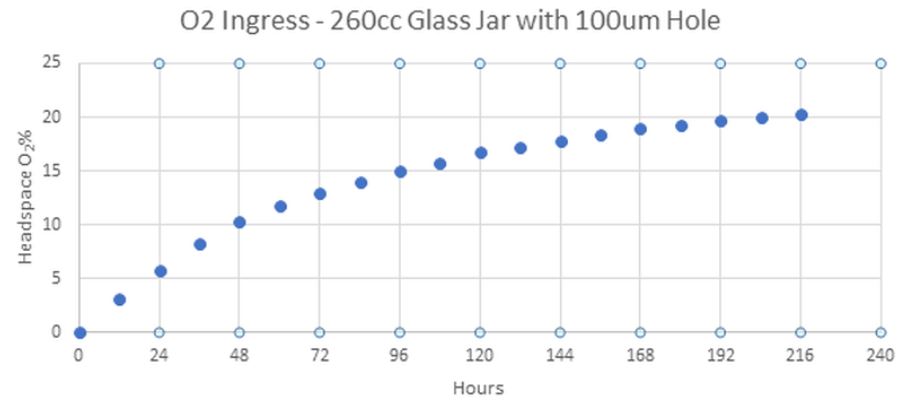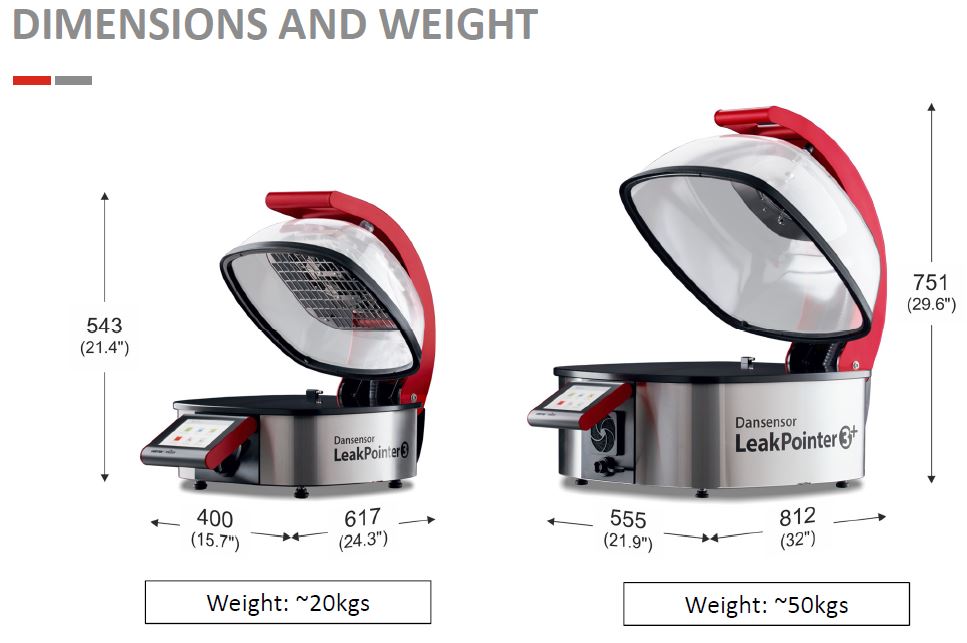
Invisible Causes of MAP Gas Leaks
Or – The Disastrous Consequences of Holes
When the cause of a problem is invisible, it can be very difficult to know what to do and where to find a solution. Gas leaks in MAP based packaging are one of those challenges and something that can very rapidly, and at times instantly, destroy the projected shelf life of a product.
What we know
There are several ways in which a leak can happen. From the more readily detected entrapment of product in the lid and film seals, to leaks in channel seams and gussets and the impossible to see holes in a package surface.
What we might want to believe
That’s usually “If I can’t see the hole, then surely its not big enough to be a problem.” The team at Mocon, who make the Dansensor range of gas flushing equipment, decided to look at that and ran some controlled leak tests, using a non-permeable glass jar and a gas barrier with a single hole of known diameter.
The jar was filled with nitrogen and the ingress of oxygen was measured over time. (As a baseline check, the original jar was of course also tested without a hole in the barrier material, to exclude other leak sources).
- Results with 100um hole (that’s the diameter of a human hair)
In less than 10 days, the percentage O2 inside the jar was the same as the atmosphere - Results with 250um hole (that’s half the diameter of a pin)
The headspace equalised with the environment in less than 6 days.
What we often don’t know
Is the cause of the problem. And to find it, we may need to employ a number of quality assurance tests, the costs of which can be rapidly recovered from the costs saved from less defective product being returned by the customer, less food being wasted and less packaging material bailed and sent to landfill.
Leak Detection Solutions
Leak detection is a critical test parameter for every MAP line and yet not all factories consider it. However, we are seeing a change and a resurgence in interest following the release last year of the Dansensor LeakPointer 3 and Dansensor LeakPointer 3+.
Not only can these two non-destructive instruments detect whether a package is leaking, they can also predict the size of the hole, which is a great bit of information when you’re trying to identify and track down the cause of the problem.
To find out more about how the Dansensor LeakPointer 3 and 3+ can help you track down and then eliminate waste through invisible holes, contact our sales team on 01223 492083 or via sales@tendringpacific.com





